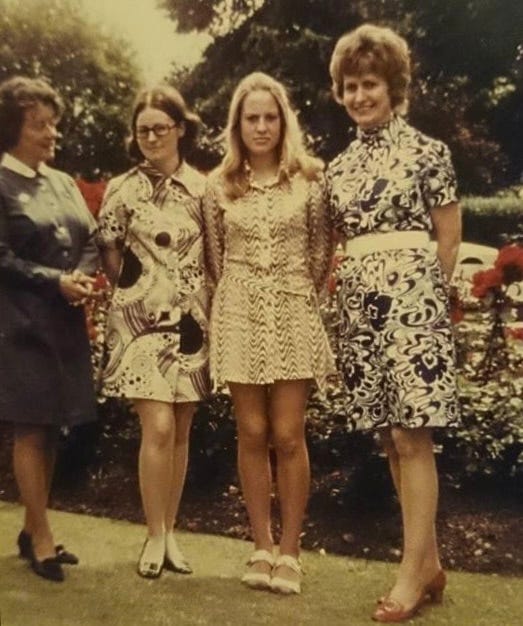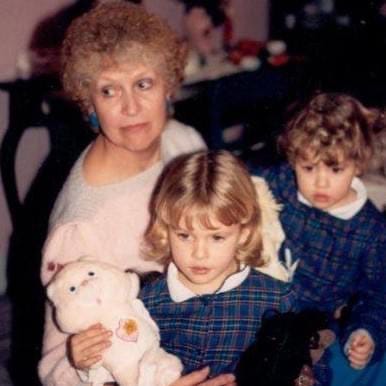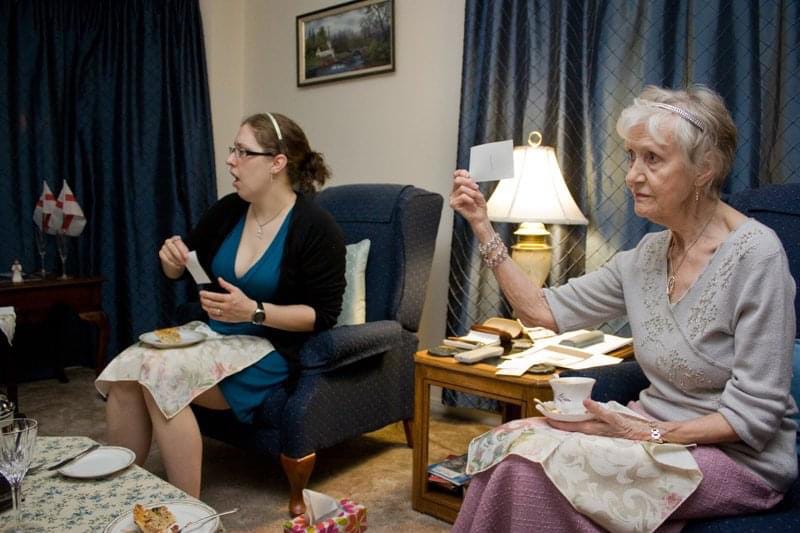Anchoring Stitches (Redux; #121)
A return to an early Campfire post, about the place of fashion in the world of art. Featuring: my nan.
I’m away on holiday, so I’ve left you with one of my personal favourites from the early days of the Campfire. Written shortly after my grandmother’s passing in May 2022, it explores the nature of creativity and how someone who proclaimed they were not creative was, in fact, mistaken. Thanks for reading and stoking the Campfire until I get back.
We could talk about my grandmother as someone who lived a life of service and gave of herself regularly to the community - both as the wife of two ministers, and in her own right as she navigated space as a single person.
We could talk about my grandmother as a professional in the medical field. Touched early by rheumatic fever and living ever since with its consequences, she contemplated a study of the sciences. But, influenced by family duty and gender roles, she found a career in hospital administration and made her imprint on medicine by influencing system structure and function.
With her recent passing, I’ve naturally thought so much of her, and how best to describe a long life well lived. What occurred to me is that, alongside the roles of wife, mother, parishioner, volunteer, and professional, one facet touched all the others: her love for, and expression through, fashion.
And because I can still hear her voice softly stating that she was not a “proper” artist, I’ve been exploring this idea that, somehow, art belongs only to professionals or particular domains.
Indeed, Pamela Brown did not think she was a creative person, and we would playfully bicker about whether or not she possessed artistic ability. In fairness to her, my grandmother’s points of reference for “art” and “artistic” were very unbalanced. She was a twin, and her more dramatic half was an actress in local Yorkshire musical theatre, whose English cottage sat amidst an immaculately manicured garden with expensive paintings lining its walls. My great-aunt could expertly pose as soon as she heard a lens focusing; there was no such thing as a candid photo, as everything was an overt, bold performance.
It could make Norma Desmond look like a nun, and in that company, a lot of folks would be hard pressed to be similarly qualified as artistic people.
So I can see why my grandmother never thought she was creative or artistic. But, while my grandmother could not dance or act or sing or draw or play an instrument, she did have an eye for fashion.

Fabric was her medium, and the body, a canvas for expression. A deft hand with a needle and thread, there was even a brief time in the 80s when she had a home sewing business (Fashions by Jenny-Bryn). A spare room in the small rectory was her studio, where she stored cottons, silks and taffetas in the pastel streaks and jewel tones common to the fashion of the time (and which I absolutely did not drape around me to create elaborate dress-up costumes).

Making clothes requires artistic skill and craftsmanship, but what about how one chooses clothes to wear, or not wear? In that sense, are we creating anything - is this use of fashion, art?
If one considers that art is, at its core, a reaction between creator and consumer, and that how one styles themselves is a deeply personal, even vulnerable, mode of expression, we can argue for fashion as a creative art:
"Fashion is a language of creativity and exploration. Fashioning means making new forms and figures, images and materials. It is a process that alters our sense of the reality and the human; it is a process that creates new realities and existences."
- Annamari Vänskä, Fashion is Thinking
What was the nature of Pam’s art, then? A slight woman, she often seemed taller than average when she purposefully walked through the marble halls of a local high school, a structured wool coat giving way to strong notes of perfume layered over a thick turtleneck sweater and precisely matched plaid A-line skirt. Edges softened when weather turned warmer, but the structure was still there. Thin matching sweater sets, buttery silk scarves, and billowing chiffon skirts were the order of the day, and colours changed with the seasons; navy blues and reds softening to cornflowers and corals.
Like any good art, it’s given me pause as I reflect on how she used her love for fashion as a costume - an armour - for the everyday. As she played with heavy and light, strong and fragile, trends and tastes, she was curating an image and thus making a statement - a performance - every time she put on clothes. How can that not be art?
Fashion only exists as long as there is an actor to incarnate it. In that way, it is performance art.
George Berges, In Defense of Fashion as a True Art Form.

I’m sharing this for a few reasons.
First, I couldn’t put everything into the obituary, and it’s been healing to write (so, I thank you for reading this).
Second, and again somewhat selfish on my part, knowing about her is to know more about one of my influences.
But last, and most relevant for you, it’s the message that we all have creative skills and abilities. We may not be using them as much as we used to as kids, and perhaps we’re not Renaissance painters or semi-professional community theatre English actresses, but we miss out on a beautiful part of life if we discount our unique creativity and artistic ability.






I loved all the photos! (Are you a twin too?)
I loved this post the first time around, and I love it even more now. The pictures are wonderful!